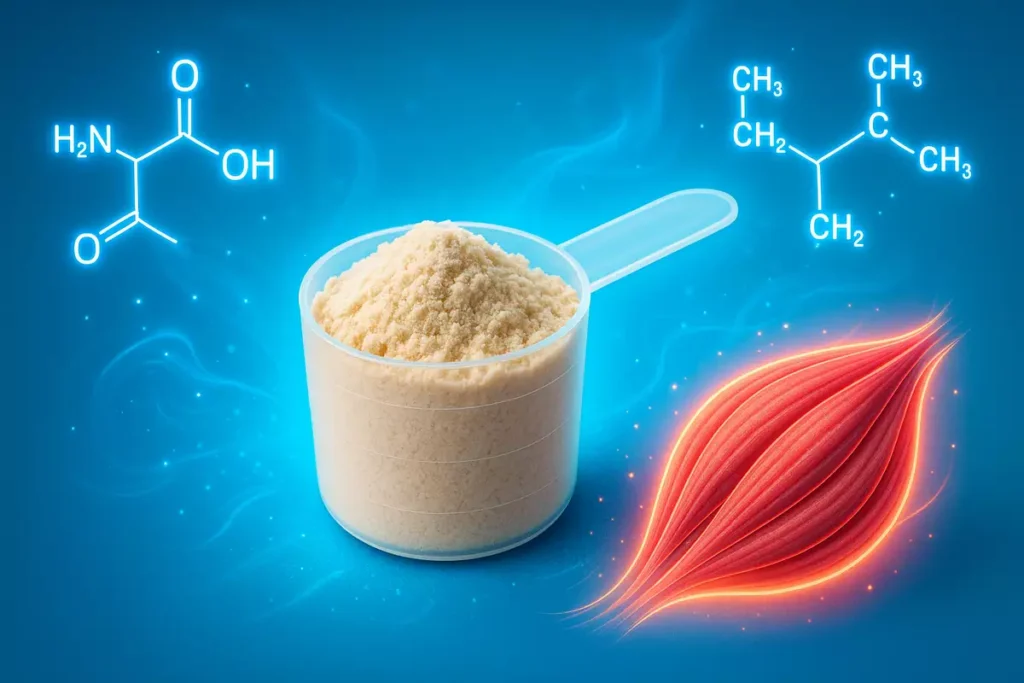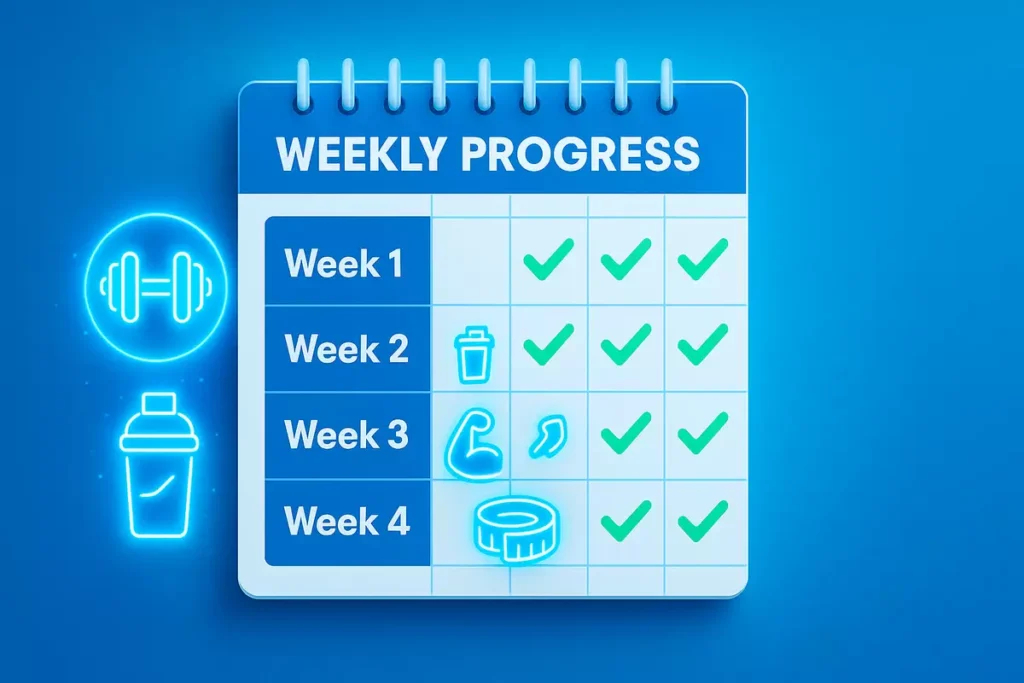Thinking about adding whey protein to your routine but not sure if it’s worth it? You’re not alone. One of the most common questions I get as a fitness coach is: “What kind of results can I expect after just one month of using whey protein?”
Here’s the truth—a lot can happen in 30 days if you use whey the right way. From faster recovery and visible muscle tone to better strength and energy, whey protein can unlock noticeable changes—even if you’re just getting started.
In this article, I’ll share what actually happens during your first month on whey, based on real results, personal experience, and proven science. Let’s cut the fluff and get into what truly works.
Table of contents
- What Results Can You Expect After 1 Month of Whey Protein?
- The Science Behind 1-Month Progress
- Real-World Example: 4-Week Transformation Snapshot
- Weekly Breakdown: Week-by-Week Benefits
- Best Practices to Maximize 1-Month Results
- Mistakes That Can Delay Progress
- Final Verdict: Is Whey Protein Worth It for 1 Month?
What Results Can You Expect After 1 Month of Whey Protein?
If you’ve just started taking whey protein and wondering what kind of results you can realistically expect after one month—let me break it down for you.
After 30 days of consistent whey protein use, you’re likely to see:
- Faster post-workout recovery
- Improved muscle tone and fullness
- Better energy and strength in training sessions
- Visible changes in muscle definition (especially arms, shoulders, and chest)
Personally, after using whey daily for 4 weeks, my muscles felt tighter—especially my chest and arms. I didn’t gain much weight, but I definitely looked leaner and stronger.
The Science Behind 1-Month Progress

Whey protein is fast-digesting and rich in essential amino acids, especially leucine—the key driver of muscle protein synthesis.
When you take it after training, it quickly delivers the building blocks your body needs to repair muscle fibers. This leads to:
- Less muscle soreness
- Stronger adaptations to your workouts
- Preservation of lean mass (even in a calorie deficit)
Whey isn’t a miracle powder—but if you train smart and eat right, it accelerates the process.
If you’re wondering how it compares to a mass gainer, check out this breakdown on whey vs. mass gainer for bulking.
Real-World Example: 4-Week Transformation Snapshot
Let me give you a quick snapshot.
One of my clients, Marcus from Sweden, added just one scoop of whey post-workout to his regular training. In 4 weeks, he dropped 1.5 kg of fat while gaining noticeable upper-body definition.
Another beginner client, Lucas from Brazil, combined whey with a basic strength program. After just a month, he saw his first real muscle growth—and that motivated him to stay consistent.
And for myself? After 30 days, I felt more energized, was recovering faster, and added 7.5 kg to my bench press. My muscles looked more “awake” even first thing in the morning.
Weekly Breakdown: Week-by-Week Benefits

Week 1–2:
- You’ll notice less soreness after training
- Recovery improves (especially after legs and back workouts)
- Appetite might stabilize due to higher protein intake
Week 3–4:
- Strength starts increasing—more reps, heavier weight
- Muscles look fuller and more defined
- You may drop fat if you’re in a calorie deficit
In my own journey, I hit new PRs around week 4. My deadlift jumped by 10 kg, and I wasn’t dragging my feet the day after leg day anymore.
If you’re wondering whether whey is useful during intermittent fasting, this guide on whey and fasting can help you navigate that.
Best Practices to Maximize 1-Month Results
Here’s what worked best for me—and for most of my clients:
- Post-workout timing: Take 1 scoop (20–25g protein) within 30 minutes of training
- Mix with water or lactose-free milk for easier digestion
- Stay consistent even on rest days (use it as a snack or between meals)
- Don’t skip real food: Whey is a tool, not a replacement
During my one-month test, I used Optimum Nutrition Gold Standard Whey and usually had one scoop post-workout. On heavier training days, I added a second scoop at night with low-fat milk.
Struggle with clumpy shakes? Here’s how to mix whey without clumps for a smoother experience.
If you’re sensitive to dairy, go for a lactose-free whey protein to avoid bloating and discomfort.
Also, if you’re not sure how much to take, this guide on whey dosage for a 70 kg male gives a solid starting point.
And yes—you can even use whey as a meal replacement if your diet is tight and your schedule’s tighter.
Mistakes That Can Delay Progress

Even with the best whey, results can stall if you:
- Rely only on supplements instead of a solid diet
- Train inconsistently or without a plan
- Don’t sleep enough or recover properly
Whey protein doesn’t build muscle in isolation. It supports your efforts—so make sure your training, sleep, and food game are strong.
I once had a week where I didn’t track meals and took whey like usual. Honestly? I saw no change. That proved to me: whey works with the plan—not instead of it.
Some people consider switching to gainers when results stall, but before making that move, compare both options in this mass gainer vs protein shake guide.
Final Verdict: Is Whey Protein Worth It for 1 Month?
Absolutely—but only if you’re also showing up in the kitchen and the gym.
In 1 month, you’ll likely see:
- Noticeable improvement in muscle tone and recovery
- Potential strength gains
- Fat loss (if combined with a slight calorie deficit)
Whey is one of the most convenient, cost-effective, and efficient ways to hit your protein goals—especially when you’re busy or on the go.
And yes, I still use it regularly. It’s become part of my routine, not because it’s trendy, but because it works—when you do.



Leave a Reply